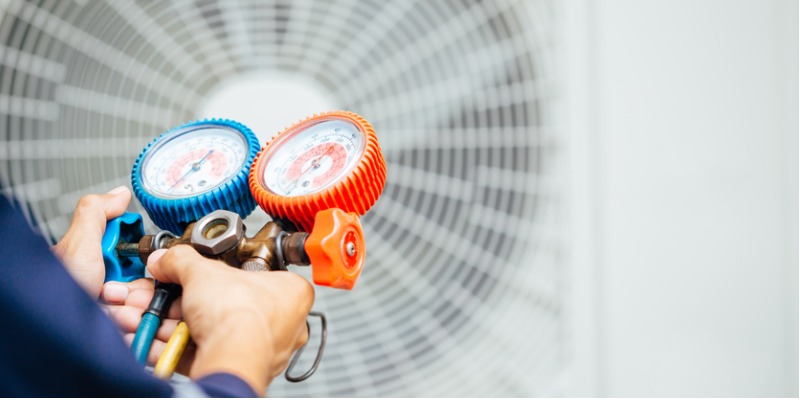
Modern central air conditioners are complex machines that include numerous high-tech components. Total performance is affected by a variety of factors such as equipment sizing, installation quality and the integrity of the air distribution system.
Evaluating total performance requires extensive training and advanced diagnostic tools. While homeowners are encouraged to periodically confirm their air conditioner is operating to design specifications, the tests should always be performed by a knowledgeable, licensed HVAC professional.
If you suspect something might be wrong with your air conditioner, here are a few troubleshooting steps to take before contacting a professional:
If this troubleshooting did not resolve your issue, call a professional for service . Here are the points that a professional will consider once they arrive:
Prior to applying gauges and meters to the system, conduct a complete visual inspection will be completed. This includes checking divider plates and duct connecting collars for gaps or breeches. Supply and return leaks degrade efficiency and can negatively impact indoor air quality. Finally, the evaporator and condensing coil should cleaned regularly to remove accumulated grime and debris. Some of these items will be the same as what you investigated, but a professional HVAC technician can often spot less obvious issues than a homeowner.
When the obvious structural problems with the system have been addressed, the following measurements can be taken to compare current performance against the manufacturer’s operational data.
A digital thermometer can be used to measure the air temperature drop between the supply registers and return grille. An air conditioner that is functioning properly should have a measurable difference between 15-22 degrees Fahrenheit.
Comparing the recorded line voltage with the published rating can verify the unit is drawing the proper amperage. Higher amp draw may indicate the air conditioner has damaged coil fins, a bad fan motor or an insufficient refrigerant charge.
A set of refrigeration gauges consists of high and low side pressure meters. Gauges are refrigerant specific since R-410A and R-22 operate at different pressures.
While the unit is off, the technician attaches the low-pressure hose to the suction line and the high-pressure hose to the liquid line. After the unit has run for at least 15 minutes, the temperature of the ambient air and return air are recorded as well as the refrigerant pressure readings.
Superheat and subcooling are measured and compared against a published chart, and the refrigerant charge is adjusted for maximum efficiency.
Regular, routine preventative maintenance can help maximize air conditioner efficiency and extend the life of your equipment. Trained and certified technicians make seasonal visits to your home or office to test, inspect and clean vital system components. Small problems can be identified and corrected before they affect performance or result in a breakdown.
If it has been over a year since you’ve had your air conditioner inspected, it’s time to book an appointment, contact us now for Burlington and Oakville air conditioner performance tests.
